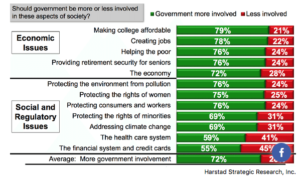Monday, November 21, 2016
John Graham, President & CEO, ASAE
Scott Wiley, Chairman, ASAE
Dear John and Scott:
This letter is a call for meaningful community-wide dialogue and action on behalf of a nation at risk.
One week ago, Associations Now Daily announced that ASAE signed a National Association of Manufacturers (NAM) letter “to the president-elect” expressing a desire to “work productively” with the incoming administration. While we recognize this same letter would have been sent to Secretary Clinton had she prevailed in the Electoral College, many of us read it as an attempt to normalize a candidate who displayed a level of ignorance, intolerance, and indecency unprecedented among modern major party presidential nominees. Mr. Trump ran an intentionally divisive campaign that included:
- Proposing a religious test for entry to the United States, which is a violation of the First Amendment to the U.S. Constitution. (Since the election, Mr. Trump’s advisors have publicly discussed the implementation of a registry for Muslims, which many see as the precursor to internment.)
- Indicating that he would require U.S. troops to torture enemy combatants and bomb their non-combatant families, both of which are violations of the Geneva Convention.
- Bragging about engaging in sexually predatory behaviors without consequence because of his celebrity status, boasts which have since been corroborated by more than a dozen victims.
- Promising to deport nearly 12 million undocumented immigrants, which would cause great economic cost to the United States and its businesses, and untold human suffering.
- Openly mocking physical mannerisms of a Pulitzer Prize-winning New York Times reporter who suffers from arthrogryposis, and then denying the incident occurred despite clear-cut video evidence.
- Threatening to jail his opponent, despite the fact that she has never been convicted of any crime, which is a violation of the Fifth Amendment to the U.S. Constitution.
There is no need to elaborate further. The challenge before us is clear.
For those of us signing this letter, the most important question is what happens next. On January 20, 2017, a new administration will take office, led by an individual whose character, rhetoric, and policy positions place our country’s most vulnerable populations at even greater risk. These diverse communities include association members, volunteers, and staff who are expecting ASAE to hear their voices at this perilous time. The question is whether ASAE, and by the extension the association community it serves, will choose to listen to those voices and take steps to help protect people who are now under direct threat.
Through this letter, we are asking you and the ASAE Board of Directors to recognize the uniquely dangerous moment at which our country finds itself, and answer our call for community-wide dialogue and action on behalf of a nation at risk. We recommend that ASAE take the following steps:
- Issue a second letter calling on Mr. Trump to publicly repudiate his divisive rhetoric and policy proposals before Inauguration Day. Consistent with the described process of preparing the NAM letter, we would ask ASAE to seek support for this letter from philanthropic, professional, and trade associations; non-profits; and other organizations across the country.
- Call on Mr. Trump to forcefully denounce the hateful attacks against women, racial, ethnic, religious, and other minorities that have been made in his name since Election Day as fundamentally wrong and incompatible with our shared American values.
- Communicate both publicly and privately to elected officials at all levels of government that ASAE and the association community will oppose divisive rhetoric and policies that place the lives of Americans at risk, and create a communications toolkit for individual association members, volunteers, and staff to use as part of their own advocacy outreach.
- Develop a more transparent and inclusive process of organizational decision-making around ASAE’s advocacy and public policy activities.
- Appoint an independent ombudsman from outside of the current ASAE organizational structure to whom any association member, volunteer, or staff person can raise concerns, pose questions, or seek advice on how to address the personal or professional issues that may arise from Mr. Trump’s (and his followers’) divisive rhetoric and policies.
- Work with societies of association executives (SAEs) at the local, state, and regional levels to organize a series of town hall meetings to nurture an open and honest dialogue about the future of our country, with the intention of bringing people from across the political spectrum together as Americans.
- Integrate into the Power of A campaign and ASAE’s Public Policy efforts a much stronger focus on issues affecting vulnerable populations, and gather and share more information on diversity and inclusion, equity, and social justice concerns.
While none of these measures can fully protect our country’s most vulnerable populations from the power of the Federal government under Mr. Trump’s direction, we believe they will build confidence across the association community in ASAE’s commitment to tolerance, fairness, and decency in our national life, and create new mechanisms for resisting the codification of Mr. Trump’s bigoted belief system into dangerous policies with potentially dire consequences for millions of Americans.
Now is an excellent time to show why associations have always advanced America.
We agree with both the substance and spirit of ASAE’s statement of commitment to diversity and inclusion, which begins with the sentence, “[i]n principle and in practice, ASAE values and seeks diversity and inclusive practices within the association management industry.” In this instance, we ask our association to recognize the urgent need for our profession to work together to take constructive steps on behalf of the entire nation and its people.
There is much discussion today about the long-term relevance of associations. At this uncertain moment in our country’s history, ASAE can demonstrate the significant impact associations can make by taking an unambiguous and just stance to preserve the integrity of the democratic process, protect vulnerable Americans, and defend the future of the American experiment. We hope you will concur and will act decisively for what is right.
Signed:
Elizabeth Weaver Engel, M.A., CAE, CEO & Chief Strategist, Spark Consulting
Sherry A. Marts, Ph.D., President and CEO, S*Marts Consulting LLC
Joan L. Eisenstodt, Chief Strategist, Eisenstodt Associates, LLC, and Past Chair, ASAE Ethics Committee
Jeff De Cagna FASAE, Chief Strategist and Founder, Principled Innovation LLC
Shelly Alcorn, CAE, Principal, Alcorn Associates Management Consulting
Dina Lewis, CAE, President, Distilled Logic, LLC
Mark Alcorn, J.D., M.B.A., Attorney, Alcorn Law Corporation
See who else signed.
Edited: A printed copy of the letter and list of all signatories was mailed to ASAE on Monday, December 12.
 majority of our workforce and membership base is the most diverse generation we’ve ever had in the US – and that the yet-to-be-named generation coming up behind them is even more so.
majority of our workforce and membership base is the most diverse generation we’ve ever had in the US – and that the yet-to-be-named generation coming up behind them is even more so.
